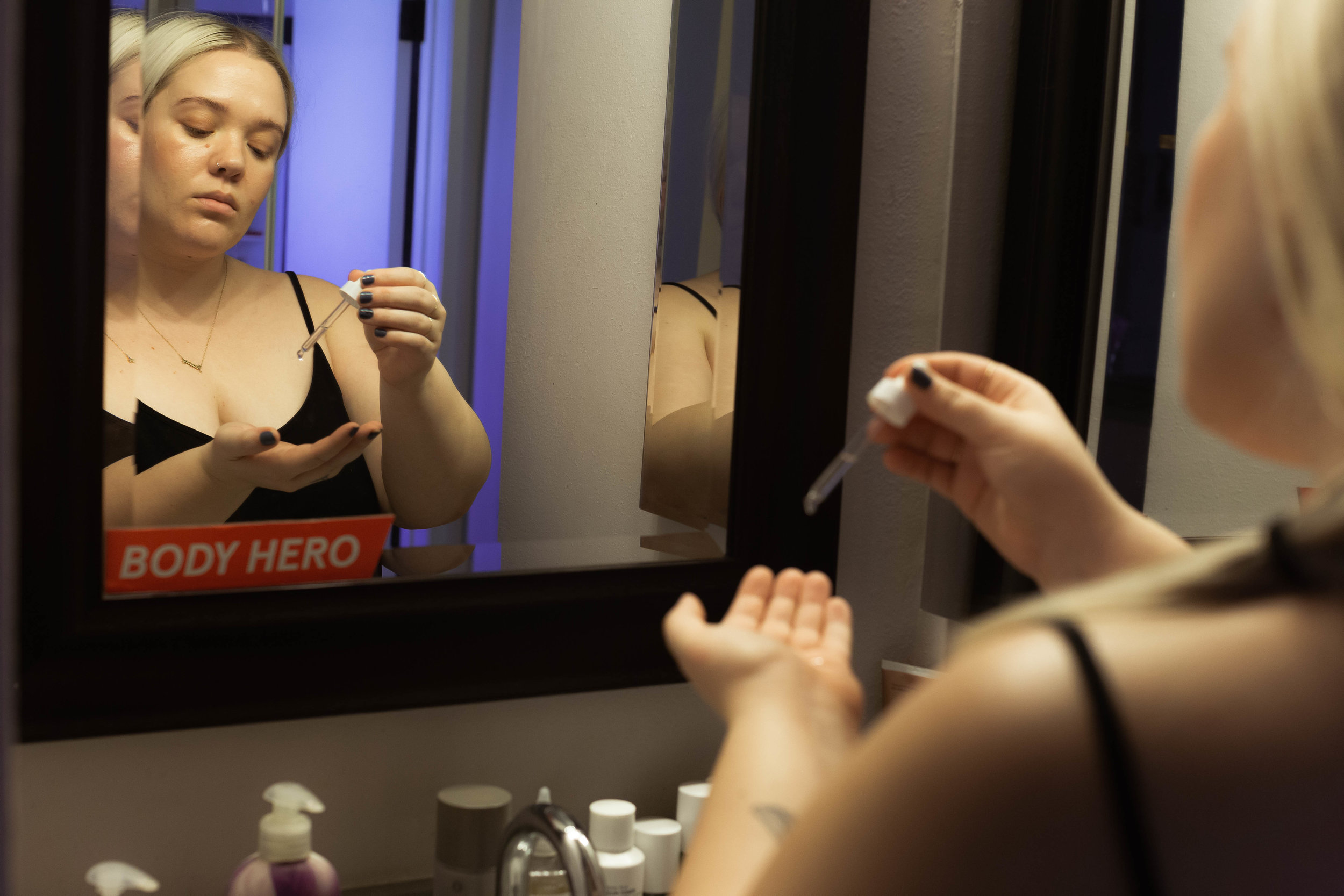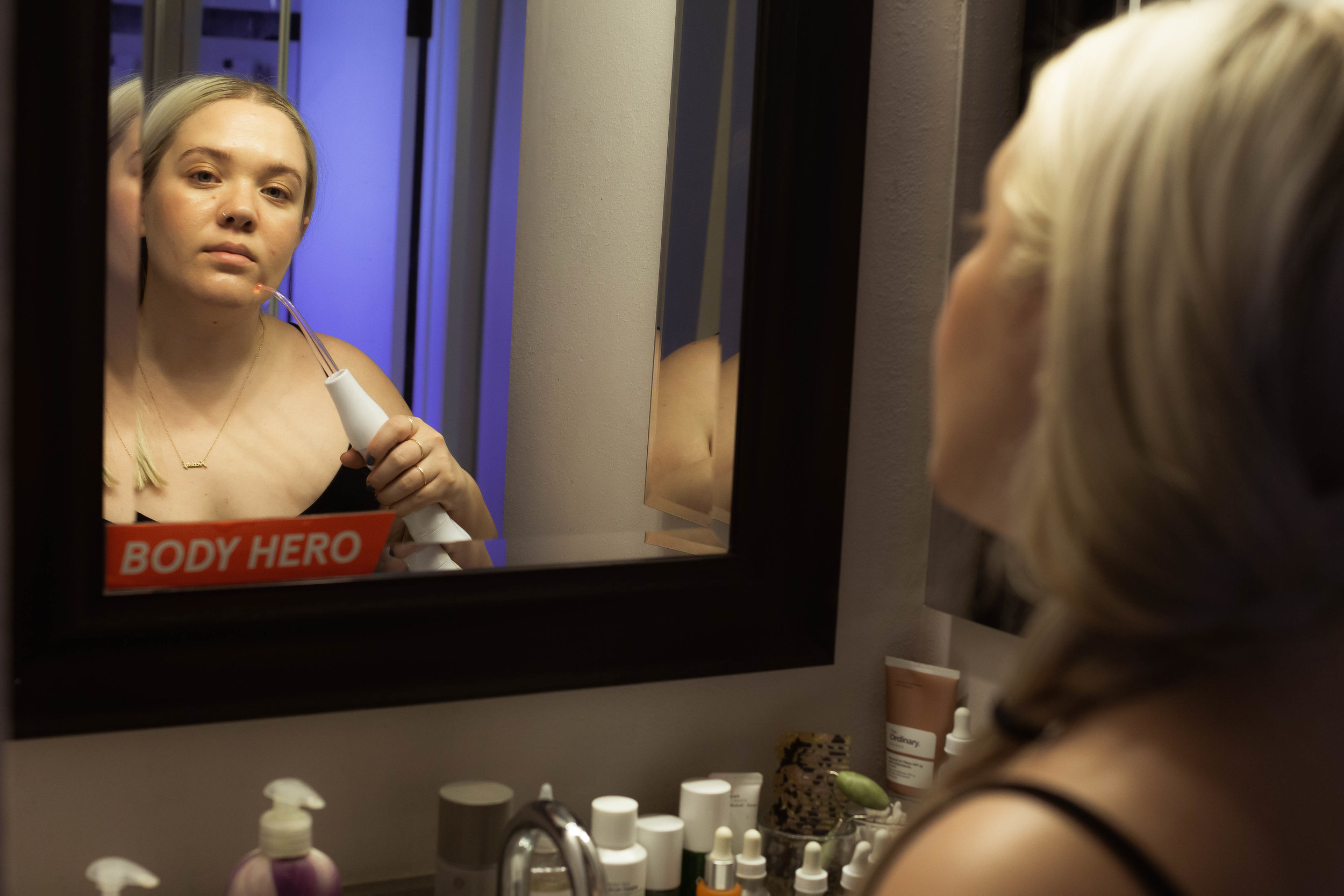HIGH FREQUENCY
I literally had someone on Instagram ask me if I was using a vibrator on my face. Nope, but lol.
I first discovered high-frequency when I was working at a med spa in college. I’ve always suffered from hormonal acne. One of the Estheticians recommended trying out high-frequency. She used the zapping tool on me and WOW. I was hooked. My painful and long-lasting hormonal breakouts were short-lived when met with high-frequency.
Recently, I was gifted a portable high-frequency machine (!!!!). There’s definitely been an uptick in the trend of skincare and various sex-toy-looking skincare tools lately, and it can be confusing to know what tools really work, how they work, and how to use them.
OK…let’s break it down. As most magical skin treatments do, high-frequency started back in the 1800s. Initially, it’s purpose was to treat strep throat and other infections. Interesting, right? Fast forward and it is now used to treat a wide range of things, such as acne, enlarged pores, puffy eyes, dark under eye circles, fine lines and wrinkles, cellulite, and dun dun dun….thinning hair!
The high-frequency has several different heads (the part that latches into the base), used for different parts of the skin or body. These “electrodes” are made out of tempered glass filled with gas. Sounds a bit scary right? Let me go on.
The tempered glass produces either Argon gas (a violet light) or Neon gas (a red/orange light). A small electrical current occurs when the electrode touches the skin. This causes a buzzing or zapping noise, and an orange or purple glow depending on what type of gas the electrode is filled with. Generally, you would use an Argon gas electrode for acne and a Neon gas electrode for aging. However, studies show that both Neon and Argon gas are effective in treating many different types of skin and various issues. For example, my high-frequency machine uses a Neon gas and I have seen an improvement to my acne.
Neon is a rare non-toxic atmospheric gas. Similarly, Argon gas occurs naturally in the environment. Both gases are good for your skin. Weird right?
Essentially, once the tool is turned on the gas ignites and light energy is given off. This forms ozone around the glass electrode. HOLD UP ARE WE IN SCIENCE CLASS?
Think of ozone as *really great* oxygen (it has one more atom than oxygen does) - it’s an antioxidant and helps eliminate toxins from your skin. It works as anti-bacterial, which is why it’s so great for acne…it kills the acne-causing bacteria in your pores. How? The high-frequency current naturally warms the tissues in your skin, causing the blood vessels and muscles in your skin to warm up and contract…saying "see ya” to the toxins and bacteria in your skin. As a result, your skin is charged with oxygen (oxygenation), causing cell renewal…and thus, an increase of collagen (a protein in your connective tissues that helps keep your skin healthy) and elastin (an elastic protein in your connective tissues that helps your skin keep its shape).
NOW here’s the thing! The more oxygen that you allow around the electrode, the more effective it is. This is why using gauze is so essential. The farther you lift the electrode away from the skin, the more oxygen surrounds it…resulting in more ozone. Putting gauze over your face or the area in which you’re using high frequency, allows a gap from your skin to the electrode creating more space for the ozone to form and do its thing. Note: this is powerful - so protect your skin tissue by creating a gap no more than 1/4”.
Alright. So now you are thrilled to use this. You’ve already got it added to your Amazon cart. Great, great. But how do I actually use it?
Directions:
Place a finger on the electrode, and keep your finger on the electrode until it touches your skin. This helps not to “spark” your skin. From here, just glide the electrode over your skin in an upwards or circular motion. I start with my chin, then go to my cheeks, then my nose, then my forehead. Once you’re finished, put your finger on the electrode and lift the electrode off your face.
Sometimes I use gauze, and sometimes I don’t. It’s up to you, but gauze is recommended to create more oxygenation as we talked about above. :) I always put on a hydrating serum or oil prior to the gauze (or sans gauze), to help the electrode glide more easily. There are also different shapes of electrodes that come with most high-frequency machines. I use the long, thin electrode with the small ball at the end to zap any breakouts I feel forming. I pulse it on the spot that I have a breakout, or where I feel one forming.
In order to protect your skin’s tissue and not dry you out, use high frequency no more than 5 minutes in one specific area.
Here’s the high-frequency machine I use. There’s also this one that looks great too! I also like to use this gauze.






